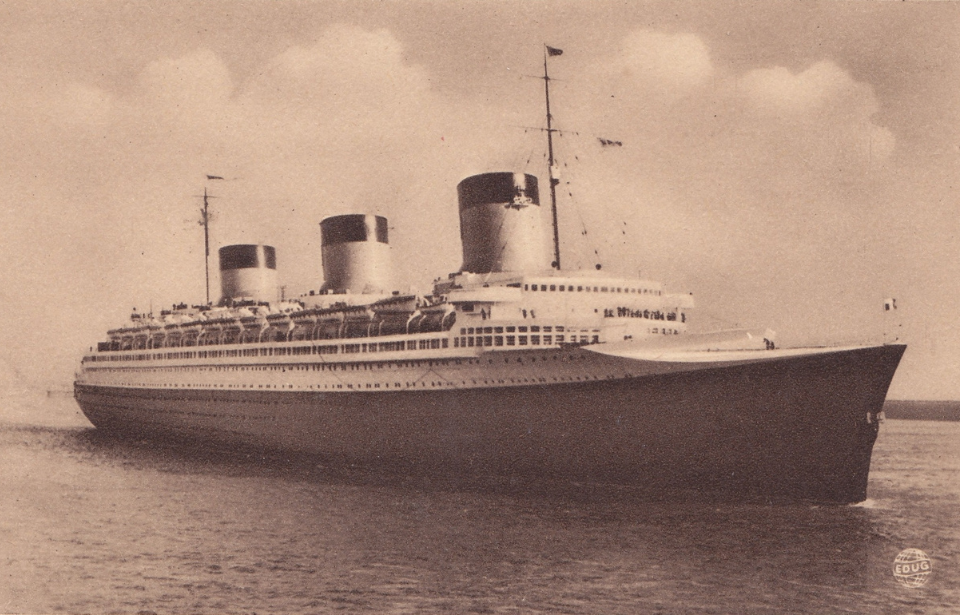The SS Normandie was one of the grandest ocean liners to see service during the 1930s. When the Second World War broke out, she found herself stuck in New York Harbor, where she later caught fire and capsized. Was her wartime loss the result of enemy sabotage, organized crime or carelessness on the part of those working aboard the vessel?
The SS Normandie was designed to be luxurious
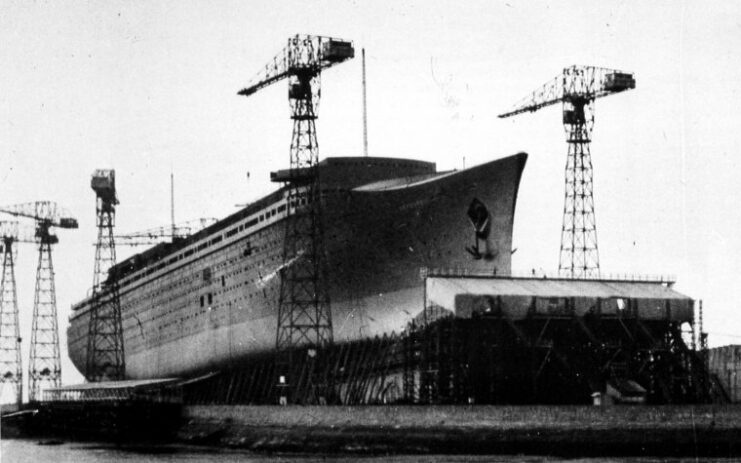
The SS Normandie was laid down for service under France’s Compagnie Générale Transatlantique (CGT). Millions of dollars were allocated to her construction, with the aim being to make her the most luxurious and modern ocean liner in the world. To achieve this, the designers used a combination of the Art Déco and Streamline Moderne styles, ensuring the interior of the ship was grand.
Normandie‘s construction was closely followed by the public and media, who saw her as a symbol of France’s ability to be a big player in the ocean liner industry. She was also an object of national pride, as she was built at a French shipbuilding yard, with homegrown parts.
With a weight of 68,350 tons when loaded, Normandie could travel at a top speed of 37.1 MPH. She had modern amenities, including one of the first ever radar systems equipped by a commercial vessel. Her grand size allowed her to house a crew of 1,345, as well as 1,942 passengers, the majority of them first-class.
Service as an ocean liner
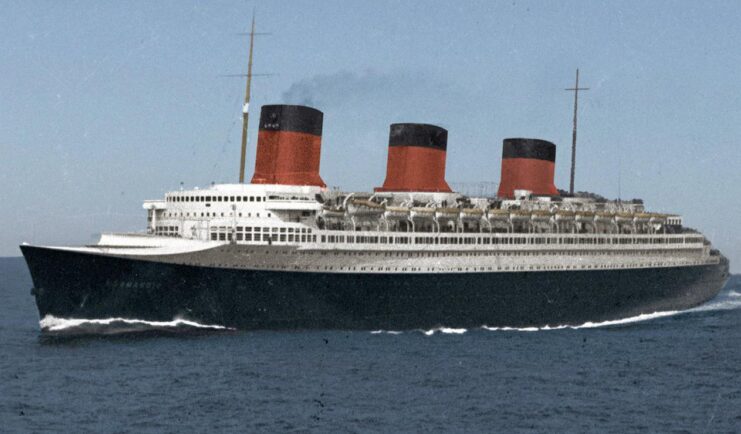
The SS Normandie officially entered service in 1935. At the time, she was the fastest and largest passenger vessel on the high seas, thanks to the amount of money put into her construction and her turbo-electric propulsion. This afforded her the ability to travel across the Atlantic Ocean in a record 4.14 days.
While incredibly luxurious, Normandie was active during the Great Depression, meaning the majority of potential passengers couldn’t afford to purchase trips. That being said, she did conduct 139 westbound journeys across the Atlantic, with her most high-profile passengers being Ernest Hemingway, Marlene Dietrich, James Stewart, the von Trapp family, Walt Disney and Fred Astaire.
The SS Normandie is interned by the US government
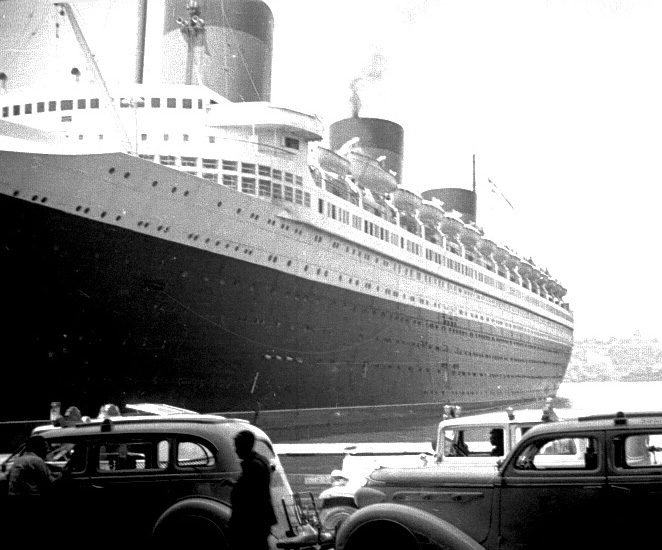
When the Second World War broke out, the SS Normandie was docked at Pier 88 in New York Harbor. The Department of the Treasury ordered 150 US Coast Guardsmen to board the ocean liner, to prevent any sabotage attempts by the enemy.
Five days after the Japanese attack on Pearl Harbor, the US government removed Normandie‘s French crew and seized the vessel. This was legal under maritime law, as, at the time, Vichy France was working alongside the Germans, meaning the ship belonged to an enemy force.
Normandie was subsequently given to the US Navy, and the decision was made to turn her into a troop transport. Given the name USS Lafayette (AP-53), conversion plans were drawn up. While a rather quick schedule was initially presented, the process wound up taking longer than anticipated, due to the sheer size of the ship.
Fire aboard the USS Lafayette
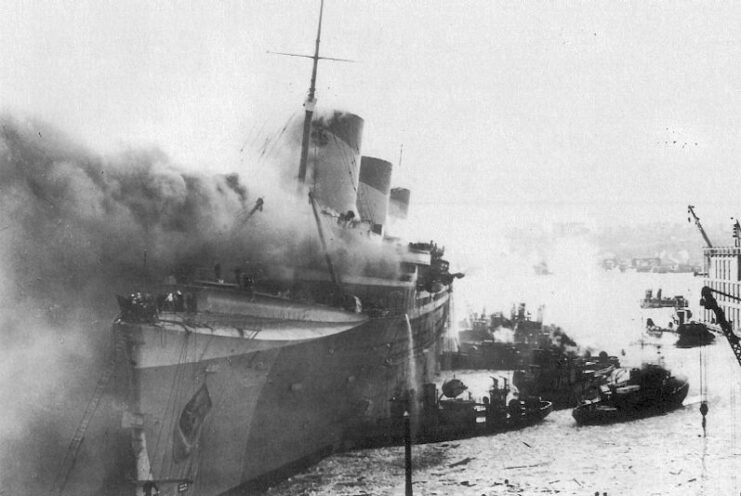
At 2:30 PM on February 9, 1942, sparks from a welding torch ignited a pile of life vests, which quickly spread across the varnished wood that made up the majority of the USS Lafayette‘s internal structure. The ongoing conversion effort meant the fire protection system wasn’t active, nor was the internal pump system, leading those onboard to manually attempt to douse the flames – to no avail.
Despite fire officials arriving on-scene approximately 15 minutes after the fire began, all efforts to temper the spread were in vain. The wind and a lack of accessibility meant crews did little more than load Lafayette with water, causing her to list.
Just over four hours later, officials deemed the fire under control, and, by 8:00 PM, began winding down operations. However, water was still causing her to list, despite counter-flooding efforts, and she capsized around 2:45 AM the following morning.
A Congressional investigation leads to answers
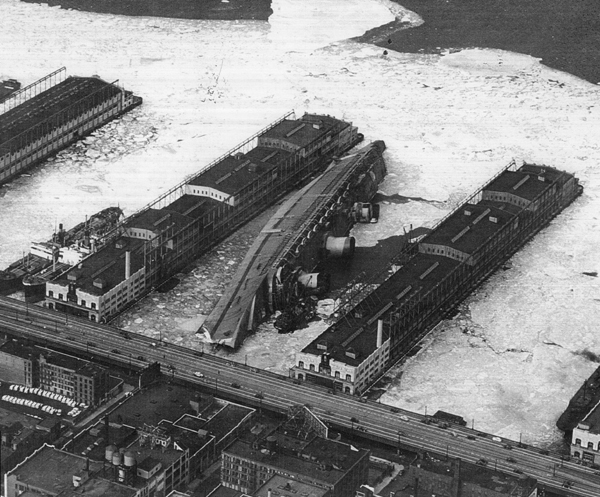
Immediately following the fire aboard the USS Lafayette, rumors began to spread regarding possible German sabotage. Enemy U-boats had been terrorizing transatlantic shipping throughout the war, and many suspected there were agents on American soil. These suspicions only increased following the release of Alfred Hitchcock‘s 1942 film, Saboteur, which hinted at German action.
Members of organized crime also claimed responsibility for the loss of the ocean liner. Anthony Anastasio, a powerful mobster in a local longshoreman’s union, allegedly planned to use the sinking as leverage for the release of an imprisoned Charles “Lucky” Luciano. Once out, the latter would prevent any future incidents of “enemy” sabotage by exercising the power of underground organizations in the area.
All the speculation led to the launch of a Congressional investigation. It concluded that the fire was an accident, caused by several factors: a lack of command structure when tackling the blaze, several rules violations, a poor and hasty conversion plan, a lack of coordination between those working onboard the vessel, and a general carelessness.
Stricken from the Naval Vessel Register
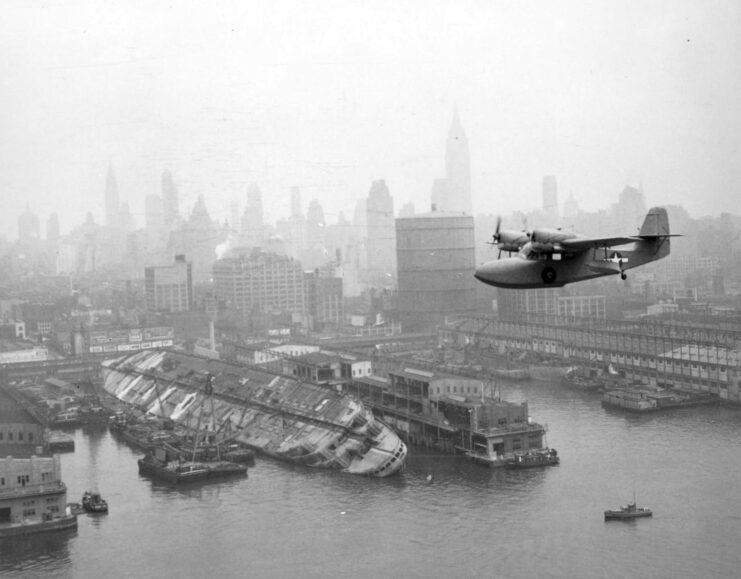
About a year and a half after the USS Lafayette capsized at Pier 88, her superstructure was stripped and righted. The following month, she was given the designation APV-4, to indicate her intended (new) role as an aircraft and troop transport.
The plan was to continue the vessel’s conversion. However, upon her being dry-docked, it was decided that such work would be too expensive, especially considering the damage she’d suffered in the fire. As such, she remained laid up until the end of World War II.
More from us: Four Men Aboard the USS California (BB-44) Were Awarded the Medal of Honor
Are you a fan of all things ships and submarines? If so, subscribe to our Daily Warships newsletter!
In October 1945, Lafayette was stricken from the Naval Vessel Register, without having ever sailed under the American flag. While she was sold for scrap the following year, it wasn’t until 1948 that the former ocean liner was officially broken down.
